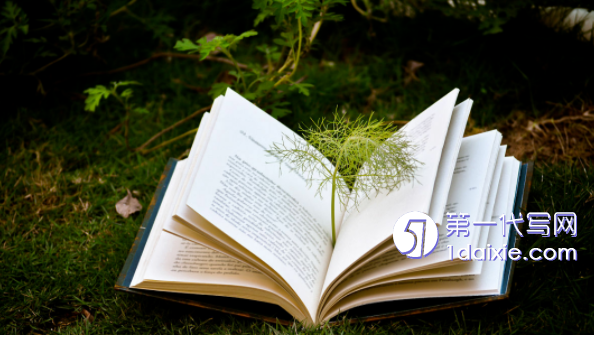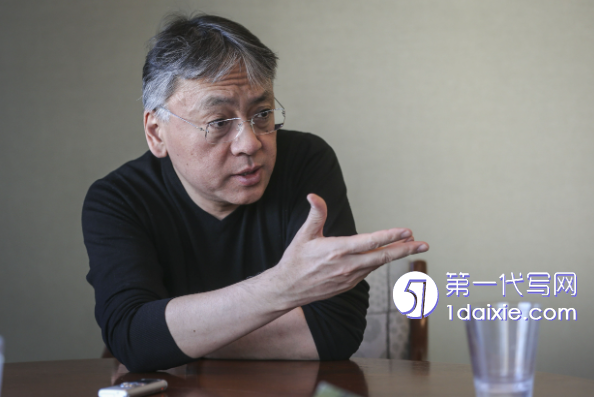本文是一篇英语论文,本论文既是一次对伦理议题的有效拓展,跳出了传统研究的局限,又将伦理的现实性与未来的可能性有机结合,阐明后人类伦理问题的现实意义—如何处理伦理与科技关系。
Chapter One The Emerging Posthuman Ethical Scenario
1.1 The Competitive AI Posthumans
In Klara and the Sun, the AI group is regarded as the most prominent posthuman type integrated into already existing life. They take over important functions, coordinate and communicate with humans, and even substitute humans for the majority of the workforce penetrating nearly all walks of life. This AI group is composed of three levels of intelligence, namely “Mechanical AI, thinking AI, and feeling AI” (Rust & Huang, 2021: 01).
Mechanical AIs are generally in the form of machines used to do some “Mechanical or repetitive tasks that can be mechanized and standardized” (Rust & Huang, 2021: 01). In the novel, their functions include replacing a large amount of physical labor and assisting some skilled brain labor. On the one hand, mechanical AIs have the relative advantage of being extremely stable and productive, which makes them highly applicable in manufacturing and service. For instance, a chemical plant named Kimball Refrigeration develops into a fully automated factory, in which mechanical AIs can automate production processes. In addition, mechanical AIs even can cope with some routine service tasks, thereby replacing some unskilled service workers’ jobs. On the other hand, mechanical AI can play the role of an assistant in improving working efficiency for some brain labor. And they usually operate like backend applications. In Klara’s narration, Josie often uses the “oblong”, resembling the “iP ad”, to contact her tutor when taking tutoring lessons. The “oblong” Klara mentioned several times is the general term for “electronic device” embedding the technique of mechanical AIs. It is the medium of online education while mechanical AIs work inside to execute a certain procedure for achieving the immediacy of their communication as well as strengthening the tutor’s teaching efficiency. Judging from these highly used functions, mechanical AIs have sufficient ability to replace many unskilled manual workers’ jobs. This action will result in mass unemployment among unskilled humans and exacerbate the hardship of their basic lives, further invoking their dissatisfaction with the AI group.

1.2 The Superior Lifted Posthumans
In the backdrop of life science technology, human genetic modification is used to alter human genetic make-up for enhancing their capabilities beyond normal or original levels. This technology deciphers human genetic code not only to help repair some mutilated genes at a biological level but also to evoke humans to detach from religious superstition for “the disenchantment of the human world”. In Klara and the Sun, “the Lifted” is another ubiquitous posthuman group who improve their intellectual level with recourse to genetic modification, therefore having advanced abilities than unmodified natural humans and standing out in this posthuman society.
Compared with natural humans, the Lifted as being the beneficiary of technology emanate a certain sense of superiority and enjoy much privilege within society. For one thing, the superiority, firstly, reflects on the Lifted’s intellectual eminence. It is identical to the most substantive value that genetic modification brings to them. Particularly, natural humans also acquiesce that they are intellectually incapable of outstripping those lifted posthumans, as Rick evaluates himself that “I’m an idiot kid who hasn’t even been lifted” (Ishiguro, 130). Secondly, the superiority lies in the promotion for being lifted. When being lifted is considered as the corollary of this technology-led society, lifted posthumans believe that they made the rightest decision in line with the interests of society and authority.
Chapter Two The Individual Ethical Predicaments
2.1 The Ethical Choices of Life Forms
Increasingly advanced gene and AI technologies enrich the diversity of life forms, providing individuals in Klara and the Sun with two rejuvenated paradigms of life forms. This means that in addition to the “natural life”, “genetically modified life” and “artificial life” (AL) are also open to the choice of life forms. In the very beginning, “natural life” is the most pervasive life form for all human beings. Human beings as carbon-based creatures should go through the natural evolutionary process from birth to death and cannot live without organic somas as their life vectors to operate every daily activity. In this case, all human beings will inevitably suffer disease, aging, and death. Then, with the technological interventions into the existing life, “genetically modified life” focusing on intellectual enhancement is the result of genetic modification acting on human beings themselves. It expands the finitude of individual life experience and places some individuals in a superior existing state than the natural one. In the novel, there have been a large number of individuals supporting this technological optimization and transforming their children into “the Lifted”. But “genetically modified life” remains to be controversial, especially when considering the sequelae of genetic modification. Its lesions may endanger the health of “the Lifted” and even shrink their lifespans. Afterward, in response to such problems or to eliminate related hidden dangers, “artificial life” (AL) combines technological acquisition with human evolution, providing the possibility for those diseased posthumans to continue their lives. With the assistance of AI technology, the AL pioneers a survival model of non-carbon life, aiming to graft all kinds of individual features, including any mannerisms, onto a humanoid robot to ensure the reproduction of that person. This suggests that human beings may be free from the shackle of their organic somas someday and their lives perhaps never come to an end. But the related questions of whether the AL can fully embody every feature of that reproducing person and whether it can be recognized as a realistic form of life, remain to be solved.
2.2 The Dilemmas over New Identities
With two types of posthumans participating in society, individuals in Klara and the Sun are classified into different social groups based on their different choice of life forms, and they subsequently acquire new social identities. By definition, social identity refers to the title that an individual is recognized or accepted in society. In this sense, social identity is inseparable from ethical identity, because “The nature of social identity is equivalent to that of ethics” (Nie, 2014: 275). Consequently, individuals ought to take corresponding duties and obligations in accordance with their new ethical identities. In the novel, under the guidance of their new ethical identities as well as social groups, individuals in turn reconstruct the social acceptance for certain groups, further developing into social status stratification. The social status stratification in this posthuman society indicates that the lifted group dominates the central position whereas the natural human group and the AI group are more or less marginalized ones.
But some individuals are unable to adapt to such changes in ethical identity and social status quickly, which makes them have certain confusion and further creates ethical predicaments. “Owing to the link between identity and moral principle, the change of identity can easily create ethical confusion and subsequent conflicts” (Nie, 2014: 257). In the novel, the ethical confusion for individuals is more of the uncertainty about their own current ethical identity. It stems from the challenge of their previous or innate ethical tenets to the survival rules of this emerging society they live in, correspondingly bringing individuals into specific ethical predicaments.
Chapter Three The Group Relational Ethical Crises ......................... 39
3.1 The Deterioration of Family Relations ................................... 39
3.2 The Chaos of Intergroup Relations ....................................... 44
Conclusion ........................................ 52
Chapter Three The Group Relational Ethical Crises
3.1 The Deterioration of Family Relations
As the microcosm of society, the family is often the first social unit to mirror social vicissitudes, then projecting them onto some family-related changes. In Klara and the Sun, the increasing number of fractured families signals the destruction of the family ethical order by technology. The fractured family refers to a family containing estranged or severed relations among family members. It is closely connected to the incomplete family structure like a single-parent family but certainly can occur in an intact family where there are certain head-on confrontations among family members or tacit estrangement from each other. For instance, the Josie family and the Rick family are typical fractured families, both of which have certain flaws in the family structure. Hence, there must be some family conflicts among family members, implying the severe relationship issues in these fractured families.
In the classical family, the marital relationship is believed to be the most fundamental family relationship, because creating a family must begin with marriage. In the meantime, the marital relationship is placed at the forefront of family ethical relations, due to its certain affective and ethical qualities. A stable marital relationship should not only convey emotional pleasure among family members but also play a good role model for the offspring. In this case, couples should conform to their ethical identities to have mutual understanding, support, and tolerance, and share the burden and obstacles in their life, so as to establish a benign family ethical environment.

Conclusion
Kazuo Ishiguro is always concerned about human ethics. This prompts his novels to be saturated with a hefty dose of ethics. Klara and the Sun is no exception. The novel is noted for its vivid portrayal of the ethical turmoil in the posthuman era. And hence, this thesis attempts to examine posthuman ethical issues from two dimensions: the ethical predicament of the individual self, and the ethical crisis of group relations.
The outset of posthuman ethical issues in Klara and the Sun is inextricable from the emergence of posthumans. For one thing, the AI posthumans, the genetically modified posthumans (the Lifted), and the envisioned Artificial Life all renovate the concept of “living entity”. This definitely causes individual ethical confusion about the diverse life forms, the new identity, and the alienated life value, thereby making individuals involved in corresponding ethical predicaments. For another thing, the newborn posthumans transcend the physical and intellectual limits of natural humans and apparently pose substantial threats to their survival. This is bound to induce group conflicts and subsequent ethical crises.
It is the individuals who take the lead in involving in multiple ethical predicaments. To begin with, they are caught in the choice of life forms. They are also mired in self-moral condemnation or struggle resulting from the negative consequences of their choices. Afterward, they are undertaken corresponding obligations when acquiring new identities brought by their choices. Meanwhile, they are falling into an ethical dilemma for the double impacts of the new and traditional ethics. It can be seen that the choice of life forms and the new identity are forming a new individual life value oriented by technology. Under its imperceptible and unobtrusive influence, individuals, specifically the Lifted, diminish the significance of ethical acceptability and moral baseline, thereby losing control over their bodies and falling into alienation.
reference(omitted)
